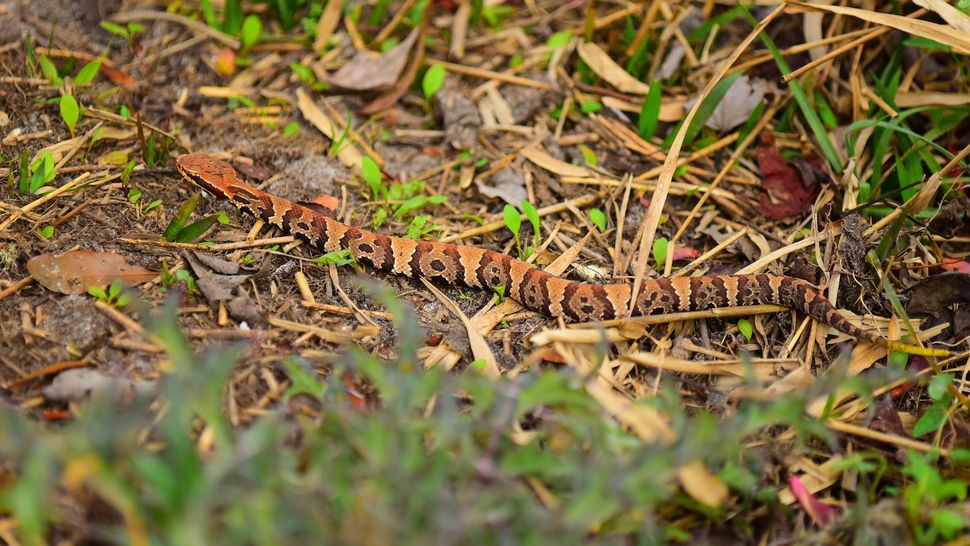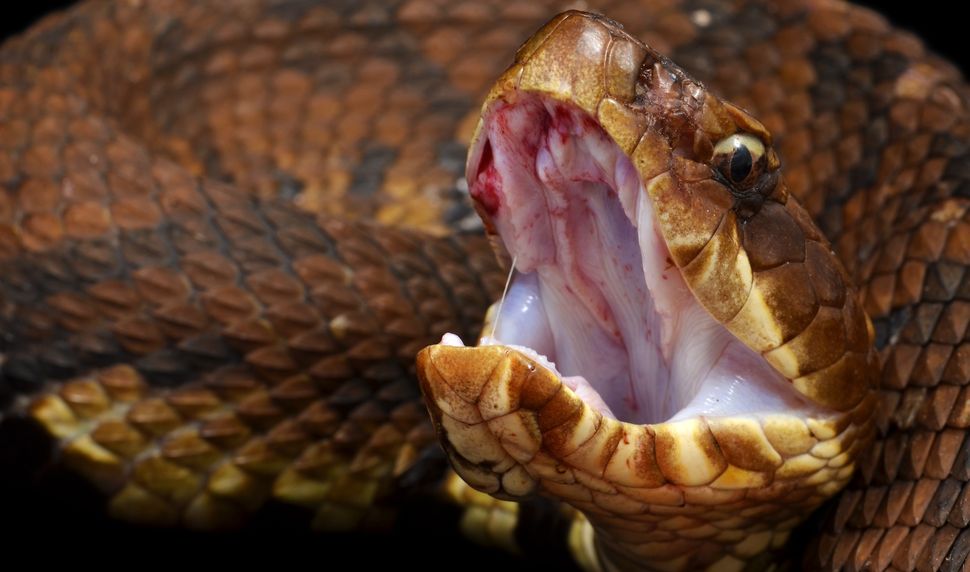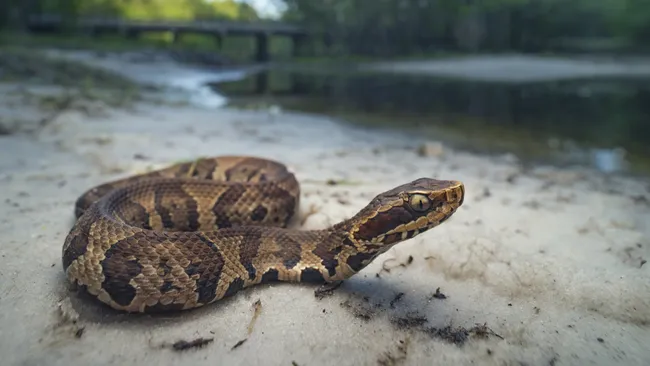
Cottonmouths, also known as water moccasins, are venomous snakes found throughout the southeastern United States. Their distinguishing feature is the white coloration inside their mouths, which they display as a warning when threatened.
These snakes are semiaquatic, equally comfortable swimming in water and basking on land. They are the only venomous snake in the U.S. that spends significant time in aquatic environments. Their ability to detect heat with specialized facial pits, characteristic of all pit vipers like copperheads and rattlesnakes, aids in hunting prey, primarily small mammals, birds, amphibians, and other reptiles.
Cottonmouths vary in size, typically ranging from 30 to 48 inches in length. They have thick, muscular bodies covered in ridged scales, blocky heads with large jowls, and vertical pupils similar to cats. Their coloration ranges from dark brown or black to olive, often with bands of brown or yellow.
Often mistaken for nonvenomous water snakes, cottonmouths can be distinguished by their thicker bodies, blockier heads that are wider than their necks, and the presence of heat-sensing pits between their eyes and nostrils. Water snakes, in contrast, have round pupils and lack these facial pits.
Cottonmouths exhibit defensive behaviors when threatened, including coiling their bodies, opening their mouths to display the white interior, and emitting a musky odor from glands near their tails. They may also shake their tails, resembling rattlesnakes, to deter predators, though they lack an actual rattle.
Reproduction in cottonmouths occurs in spring, with males engaging in courtship displays to attract females. Females give birth to live young after a gestation period of five months, with litters typically numbering between 10 to 20 offspring. Juvenile cottonmouths are lighter in color and have distinctive yellow tail tips used to attract prey.
While cottonmouths rarely bite humans unless provoked, their venomous bite is potent and can cause significant harm. They play a crucial role in their ecosystems by controlling populations of small mammals and maintaining the balance of local food webs.

Cottonmouths, also known as water moccasins, are venomous snakes found primarily in the southeastern United States. While they rarely bite humans, their venom can be deadly, and prompt medical attention is crucial for anyone bitten. According to the Centers for Disease Control and Prevention (CDC), seeking immediate medical help is vital to minimize the effects of the venom.
Cottonmouth venom primarily consists of hemotoxins that can cause significant damage. Symptoms of a bite include immediate burning pain, swelling that develops rapidly, and skin discoloration around the wound. The hemotoxins break down blood cells, impair clotting, and can lead to internal bleeding and tissue damage. Depending on the location of the bite, loss of an extremity and severe pain are possible outcomes.
Statistics indicate that cottonmouth bites are relatively rare among venomous snake bites in the U.S., and fatalities are exceedingly rare. Each year, about 7,000 to 8,000 people suffer venomous snake bites in the U.S., with fewer than six fatalities typically attributed to these bites annually.
Despite their venomous nature, cottonmouths are categorized as a species of least concern on the IUCN Red List, indicating a stable population across their range. They inhabit various aquatic and wetland habitats and are protected in many state and national parks. In states like Missouri, all snakes, including cottonmouths, are legally protected from being killed.
For those interested in learning more about cottonmouths and their venom, resources such as “Water Moccasin Snake Toxicity” and guides like “U.S. Guide to Venomous Snakes and Their Mimics” provide detailed information. Additionally, local herpetological societies like the Virginia Herpetological Society offer valuable insights and resources on these fascinating yet potentially dangerous reptiles.
